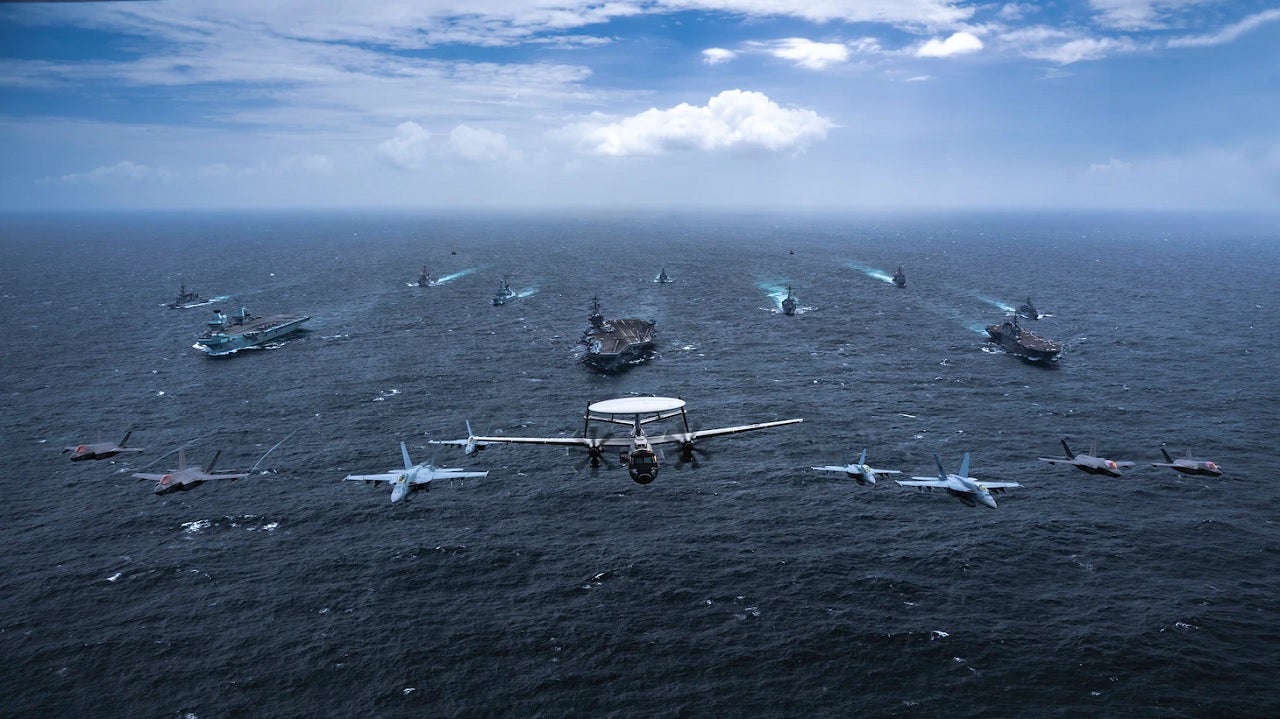
Ships and aircraft from Australia, Japan, the UK, and the US have participated in the multilateral naval training, Maritime Partnership Exercise (MPX) 2021.
The exercise was conducted in the eastern Indian Ocean from 15-18 October.
During the multinational exercise, the four Indo-Pacific navies focused on improved planning, advanced maritime communication operations, anti-submarine warfare (ASW) operations, air warfare operations, and live-fire gunnery activities.
Other activities included replenishments-at-sea, cross-deck flight operations, and maritime interdiction operations.
Carrier Strike Group (CSG) 1 commander rear admiral Dan Martin said: “MPX is high-end, multi-domain maritime training at its finest.
“All four participating nations have enduring interests in the security, stability, and well-being of the Indo-Pacific region.
“We will continue to fine-tune our collective assets – speed, precision, lethality – in order to maximise our warfighting proficiency with our regional trusted partners.”
The participating units fostered a cooperative approach toward regional security and stability.
The exercise was also aimed at enhancing interoperability and expand operations in the Indian Ocean region.
USS Carl Vinson (CVN 70) commanding officer captain P Scott Miller said: “Multilateral and bilateral exercises demonstrate our steadfast pledge to our partners and our collective desire to maintain a free, open and inclusive Indo-Pacific.
“The closer we train together, the more quickly and easily we can come together when our combined forces are needed.”
The Royal Australian Navy was represented by frigates HMAS Ballarat (FFH 155) and HMAS Sirius (O 266).
The UK Navy assets included CSG 21, comprising HMS Queen Elizabeth (R08), HMS Richmond (F2389), RFA Tidespring (A136), HMS Defender (D36); HMS Kent (F78), RFA Fort Victoria (A387) and USS The Sullivans (DDG 68).
The Izumo-class multipurpose operation destroyer JS Kaga (DDH 184) and Murasame-class destroyers JS Murasame (DD 101) participated on behalf of Japan Maritime Self-Defense Force.
CSG 1, consisting of Ticonderoga-class guided-missile cruiser USS Lake Champlain (CG 57), Arleigh Burke-class guided-missile destroyer USS Stockdale (DDG 106), aircraft carrier USS Carl Vinson (CVN 70), Fleet Replenishment Oiler Henry J Kaiser-class USNS Yukon (T-AO 202), and Carrier Air Wing (CVW) 2 represented the US Navy.


